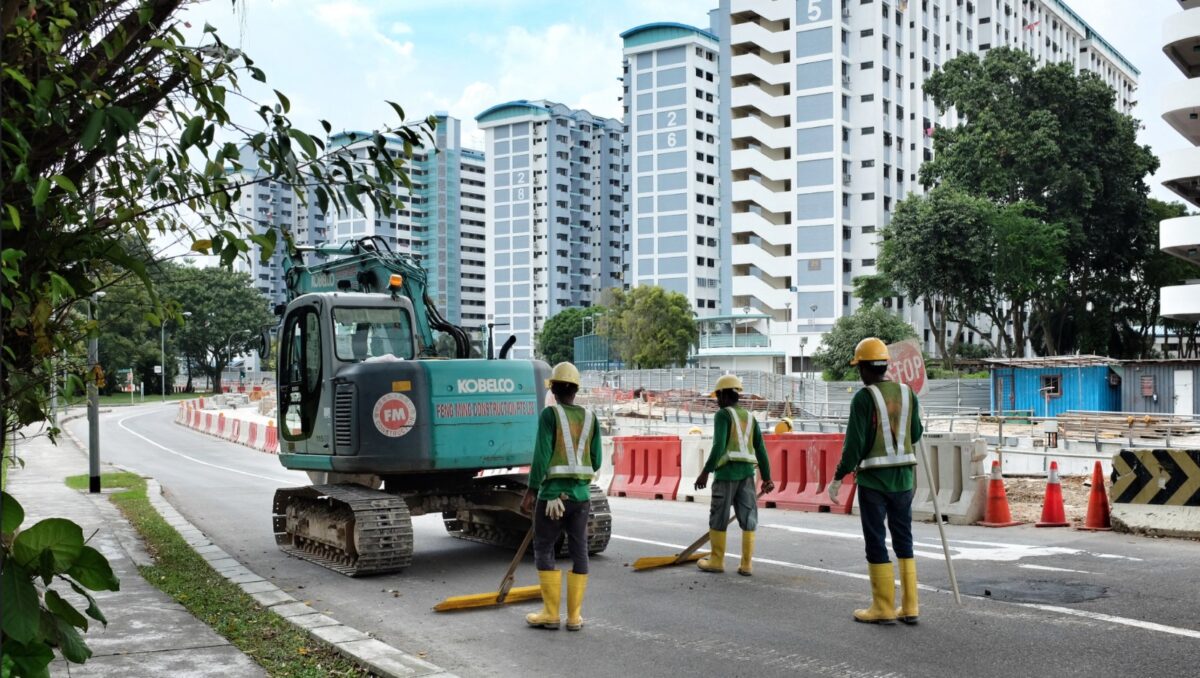By Bella Steinhauer
Singapore, one of the world’s only city-states, prides itself on being a multiracial and multicultural society. The island nation – located on the southern tip of Malaysia – has a citizen population that comprises four main ethnic groups: Chinese (74.3%), Malays (13.5%), Indians (9%), and Eurasians (3.2%), commonly classified as “Other.” A key priority of the Singapore government is to maintain the social cohesion of these four groups through “racial harmony” legal provisions. However, such priorities completely dismiss the country’s 1.64 million non-citizen population, especially low-wage migrant workers. In fact, many policies in Singapore are designed to systematically exploit and segregate migrant workers in the country. This state-sponsored abuse not only disregards the human rights of migrant workers but also fuels an undercurrent of stigma and xenophobia that undermines any attempt by the Singapore government to achieve racial harmony.
Maintaining racial and religious harmony is listed as one of Singapore’s top priorities for managing national security threats. The history of “racial harmony” dates back to the ‘1964 Race Riots’— a series of racially-motivated uprisings that erupted when Singapore merged with Malaysia following the end of British colonial rule. Some historians argue that the race riots precipitated Singapore’s Independence in 1965. As stipulated by Singapore’s Ministry of Home Affairs (MHA), the country aims to achieve “racial and religious harmony” through legal frameworks such as the Maintenance of Religious Harmony Act (MRHA) and the Penal Code. Both laws are designed to hold accountable individuals who commit racially or religiously aggravated offenses. It is unique to see a government take such measures to promote harmony and fairness between different ethnic groups in its population. Many have even praised Singapore, stating that countries like the U.S. should look to the country as an example of how to achieve racial integration and social cohesion.
Despite clearly outlined legal provisions, general praise from outsiders, and even a national holiday that celebrates Singapore’s multicultural make-up, “racial harmony” in Singapore is far from its ideal narrative. The summer spike of COVID-19 cases due to the Delta variant prompted many Singaporeans, mainly of Chinese descent, to express xenophobic, anti-Indian sentiment on social media; there were also reports of targeted physical and verbal attacks. At the institutional level, racial harmony laws have also been enforced to silence activists voicing concerns over racial injustice in Singapore. For example, Indian-Singaporean rapper Subhas Nair was recently charged with sowing racial divisions over a 2019 rap video that criticized a Chinese-Singaporean actor who darkened his skin to portray an Indian man in an advertisement. On the flip side, the Chinese-Singaporean actor never faced legal repercussions for his actions.
These incidents are not outliers. The most glaring crack in Singapore’s visage of “racial harmony” is the segregation and exploitation of migrant workers. Singapore’s 300,000 low-wage migrant workers are arguably the most vulnerable and exploited population in the country. Migrant workers, mainly from India, Bangladesh, China, Indonesia, and the Philippines, are commonly contracted for construction, shipyard, maintenance, and manufacturing roles. While many migrant workers are driven by the prospect of earning higher wages in Singapore, they are often subject to various labor rights abuses from recruitment agencies and employers such as recruitment debts, wage discrimination (including late payments, unprompted deductions, and unpaid labor), and withholding passports and other identification documents.
More distressing abuse of migrant workers pertains to their living conditions. Migrant workers are housed in overcrowded and unsanitary dormitories, often built on the outskirts of the city and segregated from the majority of the population. Such living conditions, where it is not uncommon for 20 men to share a room, have had detrimental effects on migrant workers’ health and well-being, especially during the COVID-19 pandemic. Despite making up only 5% of Singapore’s population, migrant workers living in dormitories accounted for 90% of all people who tested positive for Covid-19 in the country. In response to the high spread of COVID-19, the Singapore government locked down migrant workers in dormitories for more than a year—one of the longest experienced lockdowns in the world. Even today, Singapore’s COVID-19 rules continue to bar most migrant workers from interacting with the general public, and only a limited number of migrant workers are allowed outside of the dormitories for only a few hours at a time. Studies have found that these strict regulations resulted in a mental health crisis among migrant workers in Singapore, with many reporting heightened anxiety and depression, as well as reports of multiple suicide attempts within dormitories.
Even though mistreatment of migrant workers is broadly recognized in Singapore, reports have found that overall public support of migrant workers has decreased in the last decade. According to the International Labor Organization (ILO), in countries that display public support for migrant workers, “[support] is largely driven by the relationships people have with migrant workers, rather than demographic characteristics.” This finding illustrates how the segregation and isolation of migrant workers are stigmatizing and allow for the perpetuation of discrimination and abuse.
It is difficult to conclude that Singapore has achieved “racial harmony” when such widespread abuses against migrant workers persist in the country. The mistreatment of migrant workers demonstrates the double standard of Singapore’s nationwide “racial harmony” initiative, and the classist and nationalist conditions that prevent true harmony from being realized. While Singapore has made some efforts to improve wage discrimination against migrant workers, the government must take immediate actions to restore the human rights of migrant workers. These actions include drastic improvements to living conditions, increased social integration, and compensation to workers who have endured the unlivable conditions in the dormitories and financial hardships throughout the pandemic.
Singapore must recognize that social cohesion is impossible without confronting the country’s neglect and abuse of migrant workers. The government of Singapore cannot lay blame on its population alone; it must recognize the ways in which it frustrates its own outward efforts to achieve racial harmony.

